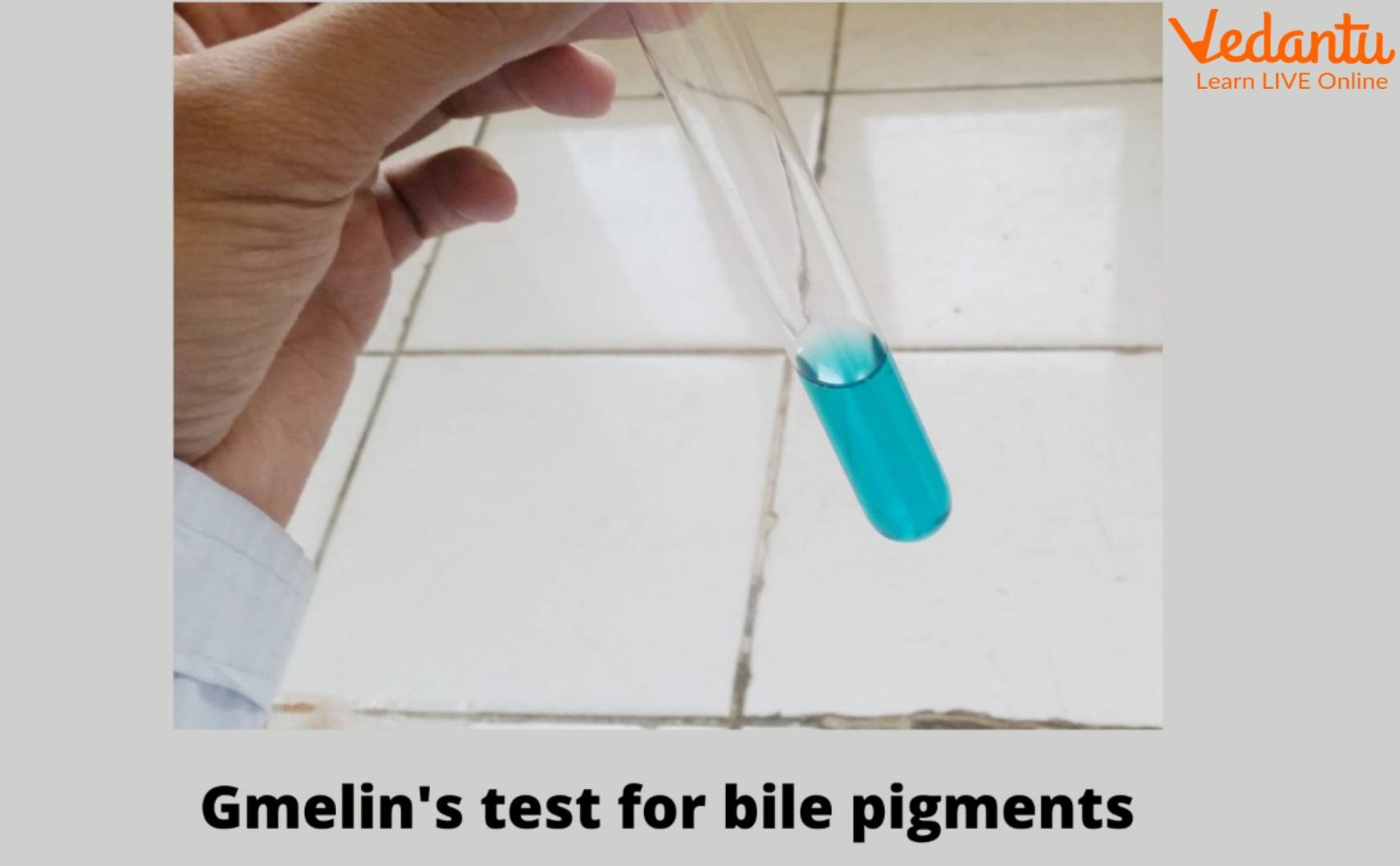How Are Bile Salts Detected in Urine?
Bile salts are made of four types of acids. Bile salts help in the digestion and absorption of food.
The presence of bile salts in urine is an indicator of liver problems.
What is Bile and its Composition?
Bile is a greenish yellowish liquid that is made and released by the liver but stored by the gallbladder which is a small pouch located below the liver.
Bile mainly consists of water in which many constituents such as bile salts, bilirubin, phospholipids, cholesterol, enzymes, and vitamins are dissolved.
There are five main constituents of bile:
Bile acids and bile salts
Cholesterol
Bile pigments
Electrolytes and water
What are Bile Salts?
Bile salts are the chemicals that enable the body to excrete harmful chemicals and cholesterol. Bile salts are also known as biological detergents.
The function of bile salts is to solubilize the ingested fat and fat-soluble vitamins and other chemical compounds.
What are Bile Pigments?
Bile pigments are the component that generates endogenously during the breakdown of hemoglobin. Bilirubin and biliverdin are two bile pigments.
What is the Composition of Bile Salts?
Bile salts are synthesized in the liver of mammals.
Bile salts are made of salts of four different kinds of free bile acids. These four acids are cholic, deoxycholic, chenodeoxycholic, and lithocholic acids. These acids combine with amino acids such as taurine and glycine to create more complex acids and salts.
Bile salts are synthesized in the liver or maybe from cholesterol, after their synthesis they pass into the bloodstream.
Bile Salt Test
This test is done to find the presence of bile salts/pigments in urine.
Bile salts/pigments present in urine in diseased conditions. This test can be done to find certain diseases such as jaundice and other liver diseases.
To detect the presence of bile salts in the urine, a smith's test is done.
Gmelin's test is done to find the presence of bile pigments in urine.
Smith's test
Article required
Smith's reagent
Dropper
Test tube
Measuring cylinder
Urine sample
Procedure
Take a sterile and dried test tube
Using a measuring cylinder add 1 ml of smith's reagent into the test tube
Take the urine sample in the dropper and hold the test tube in an inclined position and slowly add urine to the sides or walls of the test tube.
Observe the change and note the color of the solution
Observation and Conclusion
If the green color ring is formed at the intersection of both layers, this indicates the presence of bile salts in the urine.

Smith's Test
Gmelin's Test
Articles Required
Test tube
Measuring cylinder
Urine sample
Gmelin's reagent (nitric acid)
Procedure
Take 3ml of concentrated gmelin's reagent in a test tube
Add 3ml of urine sample carefully along the side of the test tube so that two liquids do not mix
Now observe the solution
Observations and Conclusion
Bile pigments will be present in urine if a display of colors from yellow, red, blue, and green is noted at the point of contact of the two liquids.

Gmelin's Test
Interesting Facts
Bile is the greenish or somewhat yellowish color
Bile pigments make the green color of bile
The liver produces 0.5-1 liter of bile every day
Gallbladder concentrates that bile by ten folds and stores 30-50 ml of bile
A person can survive without a gallbladder
Important Questions
1. How are bile salts detected in urine?
Ans: Various tests are available to find the presence of bile salts in urine.
2. What is the difference between bile salts and bile pigments?
Ans: There are so many differences between bile salts and bile pigments. The most important difference is bile salts are derivatives of cholesterol whereas bile pigments are made up of the breakdown product of hemoglobin.
3. What diseases are associated with bile pigment abnormalities?
Ans: The main disease is jaundice which is due to abnormalities of bile pigments. Excess accumulation of pigments in the bloodstream is the main cause of jaundice.
Practice Questions
What causes bile pigmentation?
What happens if bile pigment is negative?
What are the three bile pigments?
What are the symptoms of bile deficiency?
Key Features
Our liver releases bile juice, bile pigments, and bile salts. Bile juice stored in the gallbladder
Normally bile salts and pigments do not excrete in urine.
If bile salts or pigments are present in the urine, then it is an indication of a certain liver disease
Various tests are used to find the presence of bile in urine but the most important tests are smith's test and gmelin's test
Smith's test is used to find the presence of bile salts in urine whereas gmelin's test is conducted for bile pigments in urine


FAQs on Bile Salts in Urine: Causes, Tests, and Results
1. What are bile salts and what is their primary function in digestion?
Bile salts are steroid acids combined with amino acids, produced in the liver and are a major component of bile. The two main bile salts in humans are sodium glycocholate and sodium taurocholate. Their primary function is crucial for fat digestion. They act like a detergent to break down large fat globules into smaller droplets, a process called emulsification. This increases the surface area for enzymes like lipase to act upon, allowing for efficient absorption of fats and fat-soluble vitamins (A, D, E, K) in the small intestine.
2. Why are bile salts normally not found in urine?
Under normal physiological conditions, bile salts are not excreted in the urine because they are part of an efficient recycling system called the enterohepatic circulation. After aiding in digestion in the small intestine, about 95% of bile salts are reabsorbed in the ileum (the final section of the small intestine) and returned to the liver via the portal vein. The liver then re-secretes them into the bile. Because they are effectively contained within this digestive-liver circuit, they do not normally enter the general bloodstream in significant amounts and are therefore not filtered out by the kidneys into the urine.
3. What does the presence of bile salts in urine indicate?
The presence of bile salts in urine is an abnormal finding and typically indicates a problem with the liver or the biliary system. It suggests an obstructive jaundice or hepatocellular disease. When the flow of bile from the liver is blocked (e.g., by gallstones or a tumour), or the liver cells are damaged (e.g., by hepatitis), bile salts "spill over" from the liver into the bloodstream. The kidneys then filter these excess salts from the blood, leading to their excretion in the urine.
4. What are the common signs and symptoms associated with conditions that cause bile salts in urine?
Conditions leading to bile salts in the urine often present with several distinct signs. The most common is jaundice, which is the yellowing of the skin and eyes. Other key symptoms include:
- Dark-coloured urine: The urine may appear dark yellow or brown due to the presence of bile pigments as well.
- Pale stools: If bile is not reaching the intestine, stools may become clay-coloured.
- Itching (pruritus): Deposition of bile salts in the skin can cause persistent and severe itching.
- Abdominal pain: Particularly in the upper right quadrant where the liver is located.
- Nausea and loss of appetite.
5. How is the test for bile salts in urine conducted and what is it called?
The classical laboratory test to detect the presence of bile salts in a urine sample is called Hay's Sulphur Test. The principle of this test is based on the property of bile salts to lower the surface tension of fluids. In the procedure, a small amount of fine sulphur powder is gently sprinkled onto the surface of the urine sample in a beaker.
- If bile salts are present, they reduce the urine's surface tension, causing the sulphur powder to sink to the bottom. This is considered a positive result.
- If bile salts are absent, the surface tension remains high, and the sulphur powder will continue to float on the surface. This is a negative result.
6. What is the difference between having bile salts and bile pigments in urine?
While often found together in urine during liver disorders, bile salts and bile pigments are different compounds with distinct roles.
- Bile Salts: These are active agents for digestion (e.g., sodium taurocholate). Their presence in urine (choluria) specifically points to an obstruction or damage that disrupts the enterohepatic circulation, causing them to enter the blood. They are responsible for symptoms like itching.
- Bile Pigments: These are waste products from the breakdown of haemoglobin (e.g., bilirubin and biliverdin). They are responsible for the characteristic colour of bile and faeces. Their presence in urine gives it a dark, brownish colour and is a primary indicator of jaundice.
In summary, bile salts are functional molecules, while bile pigments are waste products. Both in the urine strongly indicate a hepatobiliary disorder.
7. How does a problem in the liver or gallbladder lead to bile salts appearing in the urine?
The appearance of bile salts in urine is a direct consequence of a breakdown in the normal pathway of bile. There are two primary mechanisms:
- Obstructive Jaundice: If the bile duct is blocked by a gallstone, inflammation, or a tumour, bile cannot flow from the liver to the intestine. The backed-up pressure forces bile, including bile salts, to leak from the liver's bile canaliculi directly into the bloodstream.
- Hepatocellular Damage: In conditions like hepatitis or cirrhosis, the liver cells (hepatocytes) themselves are damaged. They lose their ability to efficiently secrete bile into the ducts. As a result, bile salts and other components diffuse into the blood circulating through the liver.
In both cases, once the concentration of bile salts in the blood rises above the normal threshold, the kidneys begin to filter them out, leading to their presence in urine.
8. What does a 'positive' or 'negative' result for a urine bile salt test mean?
The results of a urine bile salt test, such as Hay's test, have clear clinical interpretations:
- A positive result means that bile salts are present in the urine. This is an abnormal finding and strongly suggests a dysfunction in the liver or biliary system, such as obstructive jaundice or severe liver cell damage. It warrants further medical investigation to determine the underlying cause.
- A negative result means that no bile salts were detected in the urine. This is the normal finding, indicating that the enterohepatic circulation is functioning correctly and bile salts are not spilling into the bloodstream.










